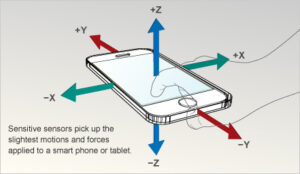The number of devices on the Internet exceeded the number of people on the Internet in 2008, and is estimated to reach 50 billion in 2020. A wide-ranging Internet of Things (IOT) ecosystem is emerging to support the process of connecting real-world objects like buildings, roads, household appliances, and human bodies to the Internet via sensors and microprocessor chips that record and transmit data such as sound waves, temperature, movement, and other variables. The explosion in Internet-connected sensors means that new classes of technical capability and application are being created.
One of the biggest drivers of the IOT is the increasing number of low-cost sensors available for many different kinds of functionality. Some of the standard sensors include movement (via accelerometer), sound, light, electrical potential (via potentiometer), temperature, moisture, location (via GPS), heart rate and heart rate variability, and GSR (galvanic skin response or skin conductivity). Other sensors include ECG/EKG (electrocardiography to record the electrical activity of the heart), EMG (electromyography to measure the electrical activity of muscles), EEG (electroencephalography to read electrical activity along the scalp), and PPG (photoplethysmography to measure blood flow volume).
Accelerometers
 When you use a compass app on your smartphone, it somehow knows which direction the phone is pointing. With stargazing apps, it somehow knows where in the sky you’re looking to properly display constellations. Smartphones and other mobile technology identify their orientation through the use of an accelerator, a small device made up of axis-based motion sensing. An accelerometer is an electromechanical device used to measure acceleration forces. Such forces may be static, like the continuous force of gravity or, as is the case with many mobile devices, dynamic to sense movement or vibrations.
When you use a compass app on your smartphone, it somehow knows which direction the phone is pointing. With stargazing apps, it somehow knows where in the sky you’re looking to properly display constellations. Smartphones and other mobile technology identify their orientation through the use of an accelerator, a small device made up of axis-based motion sensing. An accelerometer is an electromechanical device used to measure acceleration forces. Such forces may be static, like the continuous force of gravity or, as is the case with many mobile devices, dynamic to sense movement or vibrations.
The most common and basic fitness trackers include an accelerometer. It can be used for multiple things, but is typically put to work counting steps. By measuring orientation and acceleration force, they can determine whether the device is horizontal or vertical, and whether it’s moving or not. Not all accelerometers are created equal. You’ll find both digital and analog ones, different sensitivities, and different numbers of axis. The very basic ones will only have two axis, while three-axis sensors can measure their position in three dimensions. At this point, most fitness trackers use fairly advanced accelerometers for increased accuracy.
